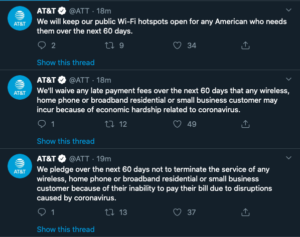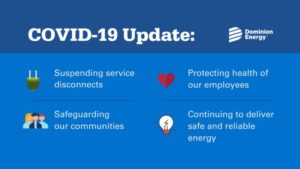As our nation faces a public health crisis in the form of the Novel Coronavirus or COVID-19, many are working or studying from home. With this mass transition from corporate or college life to homes and communities, the nation’s telecom and digital infrastructure could be under new and unprecedented use, strain, and even threat.
A data strain issue has already been illustrated in Italy, where a fully quarantined nation locked down and online activity geared up. There, the focus narrowed to online gaming. With the nation’s youth restricted to their homes, they took to high-data activities and claiming bandwidth for their entertainment.
In America, this has not yet become an issue. A problem could arise because home Internet connections are more prone to traffic spikes, slowdowns, or other issues. Even though most people use Internet for work, the transition from corporate settings to homes, with the accompanying and more limited data plans and infrastructure, may cause virtual traffic delays.
This type of activity is okay so long as the network has the bandwidth to handle greater traffic. In the grand scheme of things, strains from greater use will not take the Internet offline for great numbers of people. The Internet itself is in no danger, but the Internet Service Providers (ISPs) may struggle to balance any added strain. These are the companies that manage the access and flow of web content to users. High usage may slow or disrupt access for others, but this is more likely in rural areas or areas with less robust infrastructure. For some, this may only look like the delay caused by a lot of people streaming Netflix. Others in rural America or those still using dial-up may find their connection unusable. This could be the impetus for greater rural investment.
Many companies are already taking action like waiving data caps for home internet plans without unlimited data. Only time will tell how ISPs invest after this crisis subsides.
A different kind of threat is actual cybersecurity vulnerability. With many professionals working from home, attempts to compromise data may come from phishing scams and malware to spying through unprotected WiFi networks that employees spread across the country may utilize. For working professionals, this will require special caution not to click on links claiming to be official updates from corporate or government entities. It also requires diligence not to leave sensitive content in shared, open, or unprotected networks, drives, and more. Password rotating is never a bad idea, and is especially important if a threat has already been realized.
Never underestimate bad actors taking advantage of crisis. Even the U.S. Health and Human Services Department has reported being attacked.
The next challenge is utilities like water and electric. These certainly can and have faced cyber threats, which at a time of national emergency is all the more devastating. Beyond cyber concerns, general use could become an issue.
The potential for greater use is not an issue in itself, but resident’s ability to pay may be. Localities are implementing protections for vulnerable residents who may lose out on paychecks or even jobs due to the virus and be unable to pay for water, internet, and electricity. Utility companies are also suspending delinquent payment shutoffs and similar activity.
With so many people in their homes all day, electricity usage will change drastically, along with utility bills potentially. It is important to be responsible and mindful of how you and your home interact with energy. Try to conserve power. It will not only help reduce peak energy strain, but can save you money at the end of the month.
All in all, a home-bound populous will change our interaction with infrastructure in America. From use of the Internet to potential threats to individuals, corporations, and utility providers from cybercriminals, and more home use of energy, individuals will need to be especially aware and responsible, even while at home. When COVID-19 is under control and things return to normal, many weaknesses in our infrastructure will be revealed. This will highlight areas in need of investment and reform, but also demonstrate the value in improving our digital and cyber infrastructure, which extends into areas like smart grids, power generation, and more.
Written by Benjamin Dierker, Director of Public Policy
The Alliance for Innovation and Infrastructure (Aii) is an independent, national research and educational organization. An innovative think tank, Aii explores the intersection of economics, law, and public policy in the areas of climate, damage prevention, energy, infrastructure, innovation, technology, and transportation.

